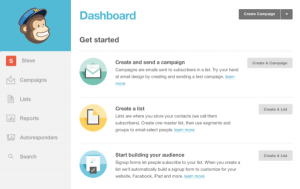— June 27, 2018
The business world isn’t that big anymore. Sure it’s enormous in terms of volume of sales, market value, business valuation and even global reach. However, when it comes to communication and access to global talent, the business world has significantly shrunk in the past decade. Thanks to the exponential growth of technology, communication is rapid and without boundaries, and having access to agile talent is limitless and abundant. All this has made the business world smaller than ever before. It’s risen the need for organizations to evolve into exponential organizations. And with the challenge of growing exponentially comes the added responsibility to manage diversity more carefully.
When you’re accessing talent that’s global, you’re essentially creating a workplace that’s multidimensional, multicultural and spread across the world. How do you then blend cultures to create a well-oiled machine that can accurately zero into your organization’s purpose and ensure your business succeeds? Based on my experience of working with talent from multiple cultural backgrounds, here are 4 tried and tested ways to manage diversity and harvest a culture that fosters cohesiveness and exponential growth.
1. Solidify Relationships
The more time you invest in your teams the higher your chances of creating stronger bonds from the knowledge you gain about them. Sure you have meetings where you discuss plans and strategies. And sure you have performance review meetings. However, these don’t count to the relationship building that’s really needed. Spending quality, one-on-one time with each and every member of your team is a priority for exponential leaders. It enables you to get in-depth learnings on their perspectives and how they view the world, their careers, and the organization. By engaging with each member you’re essentially gaining their trust, which you can then utilize in group sessions.
Also, the insight you gain from each of your team member’s will help you utilize their skills more aptly and motivate them more accurately. Basically, you’ll be able to see things from each individual’s perspective.
2. Zero-In on a Specific Need
Everyone’s got their own agendas in life and their careers. Your team members seek varying rewards, gains and benefits from the organization they work for. If left on their own, their differing needs would wander aimlessly. Hence, it’s imperative that you channel their energy and focus on a specific need. What are we all striving to achieve? What are the collective inputs aiming for? By creating a shared need that everyone can agree upon and strive to work for you’re guiding your team to zero-on on a common, specific need. That need, of course, plays into the bigger picture of what the organization is aiming for as a purpose.
Understand this – people from diverse backgrounds have differing needs and purposes. However, you as an exponential leader require everyone to set aside their differences, blur the lines that sets them apart and instead help them see what unifies them.
3. Create a Safe Environment
I’ve often noticed that most employees will feel uncomfortable speaking up and voicing out their opinions in the presence of a “big boss”. This very clearly is a cultural phenomenon more than a red tape issue. Despite how talented or brilliant your team members are, they’ll go mute in situations that can help springboard their careers. This is precisely why you, as their leader, needs to create an environment where they feel safe enough to speak their mind. And this can be achieved if you were to provide them smaller groups where they feel secure and less intimidated.
Of course, to create a safe environment you need your peers, i.e. other leaders, to also keep an open mind that their ideas and notions will be challenged by juniors from other functions. And it’s perfectly alright!
4. Ensure Verbal Democracy
You’ll often notice that in group and team discussions there’s usually the few that speak up more than the others. Probably 65% of a team comprises of silent observers, while the other 35% are quite vocal in their opinions and views. This unbalance makes managing diversity a nightmare for leaders. Hence, encourage everyone to have a stab in the discussions by ensuring there’s verbal democracy. Everyone has a say and their say has value. You’re not only encouraging them to speak up and gain more confidence, but you’re also learning their perspective, which probably is lost in their silence.
The team can seriously benefit a great deal when everyone’s contributing and speaking out. Every team member brings with them unique skills and experiences. Let them build upon that by hearing them out equally.
By using these 4 techniques you’ll not only be able to manage diversity in your organization, but you’ll also address the complexities that arises from exponentially and rapidly changing environments. The closer and more gelled your teams are, the higher chances you have of succeeding and building a brand that’s based on the strengths of its talent.
Business & Finance Articles on Business 2 Community
(57)
Report Post






